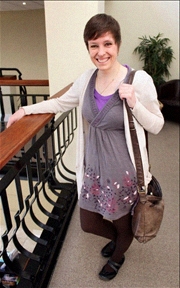As a former
registered learning disabilities nurse, the author had worked for many years
with people who have an autistic spectrum disorder, or other types of learning
disability. In 2002, while working voluntarily in an autistic unit of a local
primary school, she came across the Picture Exchange Communication System.
Seeing the merits of the system, the author wanted to learn more about it.
Finding that very little had been published about ‘PECS’, particularly in the
UK, the author decided to write her final year undergraduate dissertation on
the subject. The author is in the final year of a combined English/Education
degree at the University of Glamorgan, Wales UK.
Autism is
today regarded as a continuum disorder. Autistic spectrum disorder (ASD) is
described as “a complex lifelong developmental disability that affects the way
a person communicates and relates to people around them” (NAS, 2003:online).
‘True’ autism with severe learning disability is at one end of the spectrum
while Asperger syndrome, with no learning disability, is at the other end.
People
with ‘true autism’ are thought to make up about 0.1% of the UK population
(Dockrell and Messer, 1999:68).
Some
children with ASD develop good spoken language skills. Others may develop the
ability to imitate, referred to as ‘echolalia’, but may not use functional
speech. It is thought that as many as half of all children with ASD will not go
on to develop any speech (refpl 19xx). Evidence suggests that a child who has
not acquired single-word speech by the age of 6 years will be unlikely to go on
to develop multi-word speech (Dockrell and Messer, 1999:70).
For this
reason, early intervention is vital, if a child, who cannot speak, is to
develop the ability to
communicate.
In 1994,
the Picture Exchange Communication System (PECS) was developed at the Delaware
Autistic Program, USA, by Dr.Andy Bondy and Lori Frost.
PECS is
an augmentative communication system, created primarily for children with ASD
who have no functional speech. The primary goal of PECS is not to teach
children how to talk, but to provide them with functional communication skills.
The
system is distinct from many other alternative communication systems in that it
requires the
child to
initiate communication, form the outset.
The child initially learns to approach a ‘communicative partner’ to exchange a
picture, or symbol of an item that he/she wants. In this way, the communication
is always
meaningful and
rewarding.
PECS is a
phased system that encourages the child to acquire the system rapidly, with
increasing vocabulary and simple sentence structure, using symbols attached to
a ‘sentence strip’ with Velcro.
Once a
child has passed through all 6 phases of PECS, he/she will be able to make
his/her needs and wishes known, comment about aspects of their environment,
respond to questions from others and partake in social etiquette: All the main
functions of spoken language (Bondy and Frost 2002:106).
The
dissertation aims to examine PECS as a system, drawing on recently published
material on the subject. In addition, a case study was carried out in order to
study PECS in use.
The
subject of the case study was an 8 year old boy with ASD and no functional
speech, who attends an autistic unit in a local primary school. He has been
using PECS for four years.
Primary
research data for the case study was collected by direct observation, while
working with the pupil in the classroom, interviews with significant others and
photographs.
The
dissertation is brought to a conclusion by compounding the primary and
secondary research material and making recommendations for future research into
PECS.

